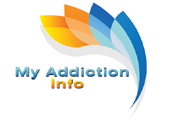
Understanding Opioid Use Disorder and the Opioid Epidemic
What's In This Article?
The U.S. Department of Health and Human Services (HHS) issued a public health alert because the United States is in the middle of an opioid overdose epidemic related to opioid use disorder and overdose deaths.
Opioid use disorder is very common, and as of 2015, estimates indicated that around 16 million people globally had been affected by opioids at one time or another. While there were only 18,000 deaths from opioid use in 1990, that figure had climbed to 122,000 deaths around the world by 2015.
Who is Affected by Opioid Use Disorder?
Statistics show that opioid use disorder usually begins in young adulthood. Men are much more likely than women to be affected.
When looking at the statistics regarding opioid use disorder, the HHS reports that almost 80% of those who use heroin reported that they had misused opioids that they had been prescribed before starting heroin use. While there are more than 14,000 substance abuse facilities in the U.S., there are still 116 people who die daily from overdosing on opioid-related drugs.
What is Opioid Use Disorder?
Opioid use disorder is a broad term, but the American Family Physician explains that the disorder is when you cannot stop taking the drugs even if you want to stop them or you are using more than the doctor prescribed and are unable to reduce your dosage.
If people with opioid use disorder do not take opioids, they usually won’t feel well. They could suffer from various signs of withdrawal, such as stomach pain, fever, nausea, and diarrhea. Not everyone who takes opioids will become addicted to them.
How Does One Become Addicted to Opioids?

Opioids are addictive drugs, so anyone who uses them is at risk of becoming addicted. How long you are on the drugs and your personal history impact the outcome, but it is often impossible to predict who might become addicted, according to the Mayo Clinic.
As a condition where something that was once pleasurable now seems as though it is something that you are unable to live without, addiction is described as compulsive drug use, irresistible drug cravings and use of the drug that is out of control despite suffering harmful consequences repeatedly. Because opioids activate reward centers that are very powerful in your brain, they are highly addictive.
How Do Opioids Work?
Endorphins, which are the neurotransmitters that make you feel good, are triggered in the brain when you take opioids. Besides muffling the physical pain you are suffering, endorphins boost your feelings of pleasure that give you a powerful, but temporary sense of wellness. When the medication wears off, you might want those good feelings to return as quickly as possible. This then starts an individual on the path of opioid addiction. Opioids are prescribed by physicians to treat chronic pain, injuries, and post-surgical conditions.

What are the Signs of Opioid Use Disorder?
The Substance Abuse and Mental Health Services Administration (SAMHSA) explains that opioid use disorder has several symptoms. While it might be difficult to tell if someone is addicted to the pain medication, any suspicions or strange habits need to be given serious attention. If an individual is using more and more of a drug and their daily functioning is worsening, then addiction should be a concern. Here are a few signs of addiction to opioids:
- Using a drug longer than prescribed
- Using the drug for reasons other than it was prescribed
- Psychosis
- Lower motivation
- Euphoria
- Increased general anxiety
- Improved self-esteem
- Irritability
- Anxiety attacks
- Depression
- Abandoning important activities
- Significant blocks of time spent to obtain, use or recover from the drug
- Decreased appetite
- Increased sexual arousal
- Increased energy
- Higher blood pressure
- Increased heart rate
- Increased sensitivity to stimuli involving the senses
- Increased or improved alertness
- Insomnia
- Hyper-vigilant
- Physical agitation
The Effects of Opioid Use Disorder on an Individual
There are several different effects that the addiction to opioids could have on an individual. Some of those side effects might include:
- Chest pain
- Fatigue
- Depressed respiration
- Difficulty breathing
- A sense of elation
- Constipation
- Diarrhea
- Bronchospasms
- Breathlessness
- Confusion
- Death – from overdose or using more than one substance

Treating Opioid Use Disorder
The National Institute on Drug Abuse reports there are several ways that opioid abuse is treated. Often, medications are used to treat the addiction. Some of the medications used include methadone, which has been used for more than seven decades to treat opioid use disorder.
Buprenorphine, which was approved in 2002, can be used alone or with naloxone, which is an opioid receptor antagonist. Naltrexone was initially approved for use in daily pill form, but an extended-release injectable version is used for the monthly treatment of patients.
Extensive counseling and psychiatric care are used to help the patient overcome the addiction as well. There are both inpatient and outpatient treatment centers.


